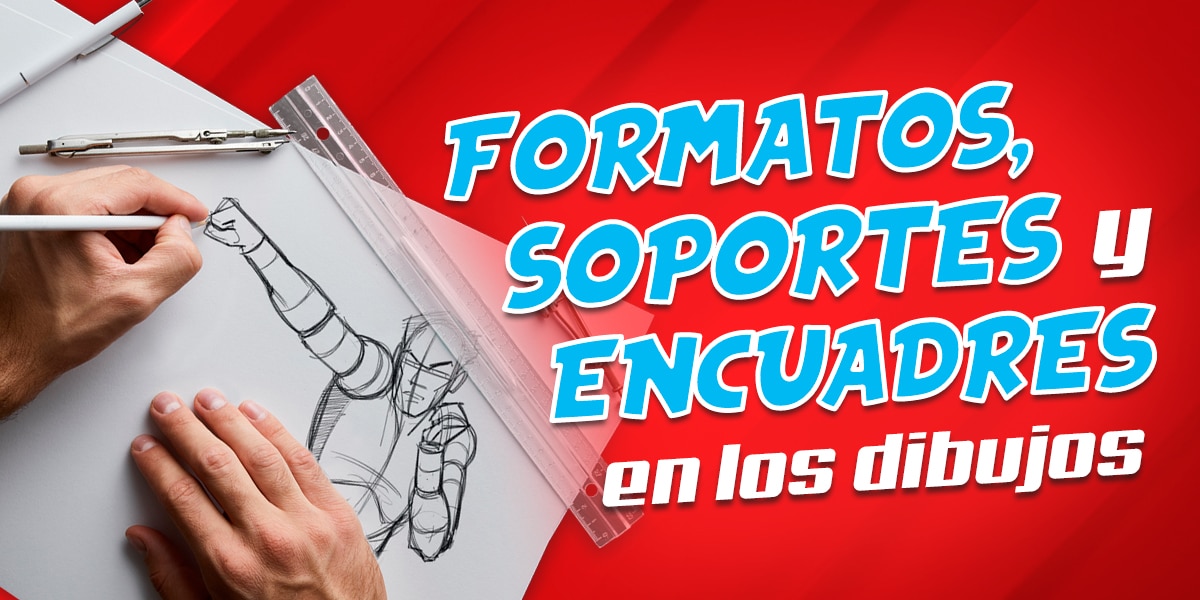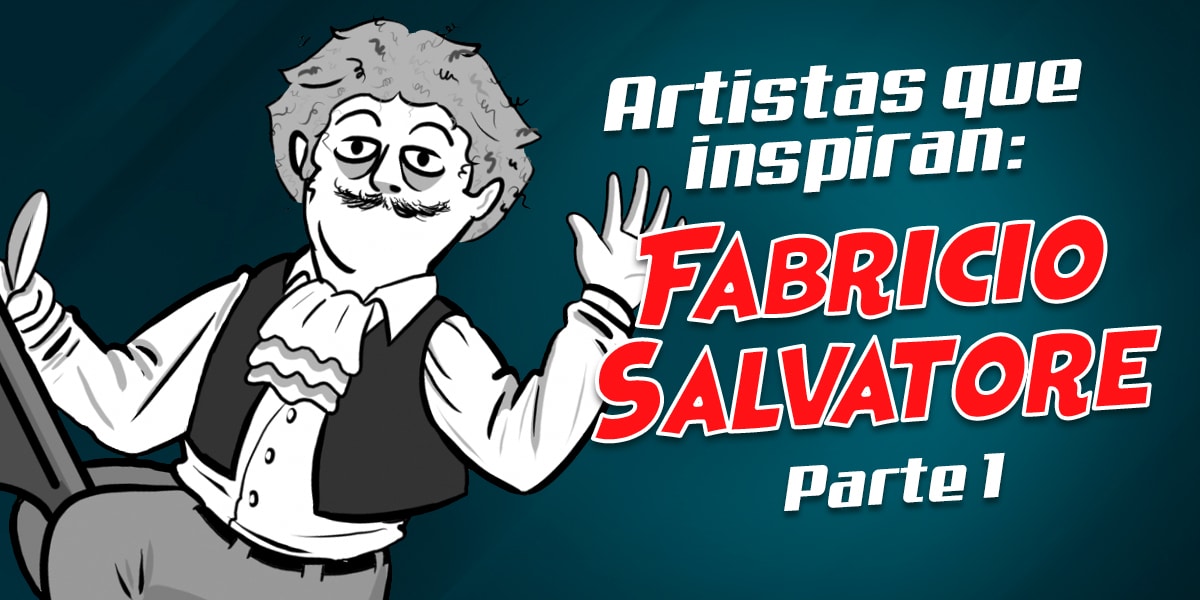Formatos, encuadres y Dibujos: Explorando los límites del arte
¿Alguna vez te has preguntado por qué la mayoría de los dibujos se realizan en hojas rectangulares? ¿Has considerado cómo el formato de tu soporte puede influir en tu creatividad? En este fascinante viaje a través del mundo de los formatos y encuadres en el dibujo, descubriremos cómo estos elementos aparentemente simples pueden transformar por completo tu enfoque artístico.
Desde los muralistas que se enfrentan a paredes irregulares hasta los dibujantes de cómics que juegan con viñetas innovadoras, exploraremos cómo los artistas han desafiado las convenciones y han encontrado nuevas formas de expresión. Prepárate para sumergirte en un universo donde los límites se convierten en oportunidades y donde cada trazo cuenta una historia única.
¿Estás listo para desafiar tus propios límites y llevar tu arte al siguiente nivel? Acompáñanos en esta aventura que promete revolucionar tu perspectiva sobre el dibujo y despertar tu creatividad como nunca antes. ¡Sigue leyendo y descubre cómo los formatos pueden ser tu mejor aliado en la creación artística!
Por Pato Castillo
Desvelando los secretos del formato y el soporte en el arte
Antes de sumergirnos en las profundidades del mundo artístico, es crucial comprender dos conceptos fundamentales: el formato y el soporte. Estos elementos, a menudo pasados por alto, son los cimientos sobre los que construimos nuestras creaciones visuales.
El formato se refiere a la forma y tamaño de nuestro lienzo creativo. Imagina que es el escenario donde tus ideas cobran vida. Por otro lado, el soporte es el material físico sobre el cual plasmamos nuestro arte. Puede ser desde el clásico papel hasta un muro urbano o incluso una pantalla digital.
Tradicionalmente, nos hemos acostumbrado a trabajar en formatos rectangulares. Libros, pantallas, carteles… todos siguen esta convención. Pero, ¿alguna vez te has preguntado por qué? La respuesta yace en la practicidad y la tradición. Sin embargo, como artistas, tenemos el poder de desafiar estas normas y explorar nuevos horizontes.
La elección del formato y el soporte no es un acto trivial. Cada decisión que tomamos en este aspecto influye profundamente en cómo se percibe y se experimenta nuestra obra. Un dibujo en un pequeño cuaderno puede transmitir intimidad, mientras que el mismo concepto plasmado en un gran lienzo puede evocar grandeza y monumentalidad.
Para evolucionar como artistas, es esencial que nos atrevamos a experimentar con diferentes formatos y soportes. Esta exploración no solo amplía nuestras habilidades técnicas, sino que también abre puertas a nuevas formas de expresión y creatividad. ¿Quieres llevar tu arte al siguiente nivel? Descubre aquí cómo expandir tus horizontes creativos.
Recuerda, cada formato tiene su propio lenguaje y cada soporte su propia textura. Al dominar estos elementos, estarás equipado para comunicar tus ideas de manera más efectiva y emocionante. ¿Estás listo para romper los moldes y explorar nuevas dimensiones en tu arte?
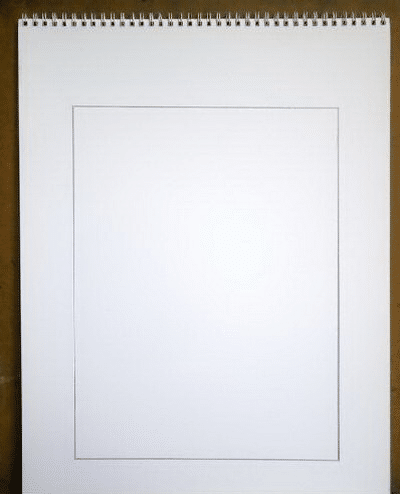
El poder del formato: Cómo influye en tu proceso creativo
El formato de nuestro soporte es mucho más que un simple contenedor para nuestras ideas; es un colaborador silencioso en nuestro proceso creativo. Actúa como un marco que no solo delimita el espacio físico de nuestra obra, sino que también influye sutilmente en nuestras decisiones artísticas.
Imagina que estás dibujando una figura humana en una hoja rectangular estándar. A medida que tu dibujo se acerca a los bordes, podrías sentir la tentación de “achicar” la figura para que encaje completamente. Este es un claro ejemplo de cómo el formato puede inducirnos a tomar decisiones que, a veces, comprometen la integridad de nuestra visión original.
La clave está en aprender a trabajar en armonía con el formato, no en contra de él. En lugar de forzar nuestras ideas para que se ajusten a los límites predefinidos, podemos usar estos límites como una oportunidad para explorar nuevas composiciones y perspectivas. Haz clic aquí para descubrir técnicas innovadoras de composición.
Un enfoque más avanzado implica seleccionar deliberadamente el formato que mejor se adapte a nuestra visión artística. Al igual que un fotógrafo elige entre un encuadre vertical u horizontal, nosotros como dibujantes tenemos el poder de crear nuestros propios formatos personalizados.
Consideremos el caso de los dibujantes de cómics. Ellos juegan constantemente con diferentes formas y tamaños de viñetas para crear dinamismo y guiar la narrativa visual. Un panel largo y estrecho puede transmitir una sensación de velocidad o altura, mientras que una viñeta circular podría enfatizar un momento de revelación o concentrar la atención en un detalle específico.
El desafío y la emoción radican en encontrar el equilibrio perfecto entre el formato y el contenido. Cuando logramos esta armonía, nuestras obras no solo se vuelven visualmente atractivas, sino que también comunican nuestras ideas con mayor claridad y impacto.
Recuerda, el formato no es una limitación, sino una herramienta poderosa en tu arsenal creativo. Aprende a dominarlo, y verás cómo tus dibujos cobran una nueva dimensión de expresividad y profundidad.
Rompiendo moldes: Explorando formatos irregulares
Imagina por un momento que eres un muralista frente a una pared llena de ventanas, tuberías y superficies irregulares. ¿Cómo abordarías este desafío? Esta situación, lejos de ser un obstáculo, se convierte en una invitación a la creatividad y la innovación.
Los formatos irregulares nos obligan a salir de nuestra zona de confort y a repensar nuestro enfoque artístico. En lugar de ver estas irregularidades como limitaciones, podemos abrazarlas como oportunidades para crear algo verdaderamente único y sorprendente.
Pensemos en los grandes muralistas de la historia. Artistas como Diego Rivera o Banksy han utilizado las peculiaridades de sus “lienzos urbanos” para crear obras que interactúan de manera ingeniosa con su entorno. Una tubería puede convertirse en el tronco de un árbol, una ventana en el ojo de un rostro gigante. Estas interacciones entre el arte y el soporte no solo son visualmente impactantes, sino que también añaden capas de significado a la obra.
Pero no necesitas ser un muralista para experimentar con formatos irregulares. Puedes llevar este concepto a tu práctica diaria de dibujo. ¿Quieres explorar nuevas formas de expresión artística? Ingresa aquí para descubrir más.
Ejercicio práctico: Creando tus propios formatos irregulares
Te propongo un ejercicio emocionante para explorar el potencial creativo de los formatos irregulares:
- Prepara tus materiales: Necesitarás papel, tijeras y tus herramientas de dibujo habituales.
- Corta formas aleatorias: Sin pensar demasiado, recorta varias hojas de papel en formas irregulares. No busques la perfección; la espontaneidad es clave.
- Observa y reflexiona: Antes de comenzar a dibujar, tómate un momento para observar las formas que has creado. ¿Qué te sugieren? ¿Ves alguna forma o patrón interesante?
- Dibuja inspirado por la forma: Comienza a dibujar, permitiendo que la forma del papel guíe tu creatividad. Tal vez un borde curvo se convierta en la silueta de una montaña, o una esquina puntiaguda inspire la cola de un animal fantástico.
- Experimenta con diferentes técnicas: Prueba diferentes estilos y técnicas en cada formato. Un papel alargado podría ser perfecto para una escena panorámica, mientras que una forma más compacta podría prestarse a un retrato detallado.
Este ejercicio no solo te ayudará a pensar fuera de la caja (literalmente), sino que también estimulará tu creatividad de maneras inesperadas. A medida que te familiarices con formatos irregulares, notarás cómo tu mente comienza a ver posibilidades artísticas en lugares inesperados.
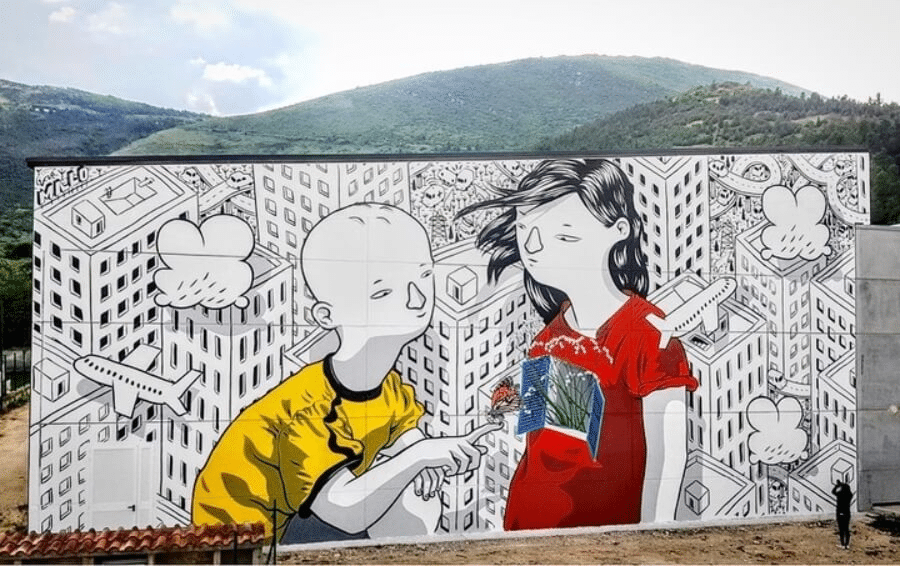
El arte de elegir: Seleccionando el formato ideal para tu visión
Así como un director de cine elige cuidadosamente el encuadre para cada escena, nosotros como artistas tenemos el poder de seleccionar el formato que mejor se adapte a nuestra visión creativa. Esta elección no es un mero detalle técnico; es una decisión artística fundamental que puede elevar nuestro trabajo de bueno a extraordinario.
Pensemos en los dibujantes de cómics, maestros en el arte de jugar con los formatos. Cada viñeta en una página de cómic es una decisión consciente sobre cómo presentar la narrativa visual. Un panel largo y estrecho puede transmitir una sensación de movimiento o paso del tiempo, mientras que una serie de pequeños cuadros puede crear un efecto de acción rápida y frenética.
Pero la elección del formato va más allá de las convenciones rectangulares. Los artistas contemporáneos están constantemente desafiando las normas, experimentando con formas geométricas inusuales, bordes irregulares e incluso formatos tridimensionales. ¿Listo para revolucionar tu arte? Explora nuevas posibilidades aquí.
Ejercicio avanzado: Diseñando tu formato ideal
Para llevar tu comprensión del formato al siguiente nivel, te propongo este ejercicio más avanzado:
- Concibe una idea: Antes de tocar el papel, visualiza claramente lo que quieres expresar. Puede ser una escena, una emoción o un concepto abstracto.
- Analiza tu visión: Reflexiona sobre los elementos clave de tu idea. ¿Requiere un formato vertical para enfatizar la altura? ¿O tal vez un formato circular para sugerir un ciclo o continuidad?
- Experimenta con bocetos: Realiza varios bocetos rápidos de tu idea en diferentes formatos. Prueba con rectángulos de diversas proporciones, círculos, triángulos, o incluso formas más complejas.
- Crea tu formato personalizado: Una vez que hayas encontrado el formato que mejor se adapta a tu visión, recorta cuidadosamente tu papel para crear ese formato único.
- Desarrolla tu obra: Ahora, con tu formato personalizado, desarrolla tu idea en detalle. Observa cómo el formato elegido influye en tu proceso creativo y en el resultado final.
Este ejercicio te ayudará a desarrollar una conciencia más profunda sobre cómo el formato puede potenciar tu mensaje artístico. A medida que practiques, descubrirás que la elección del formato se convierte en una parte integral de tu proceso creativo, tan importante como la elección de colores o técnicas.
Recuerda, no hay reglas fijas en el arte. Lo que importa es cómo utilizas el formato para comunicar tu visión única. Experimenta, juega y, sobre todo, disfruta del proceso de descubrir nuevas formas de expresión a través del formato.
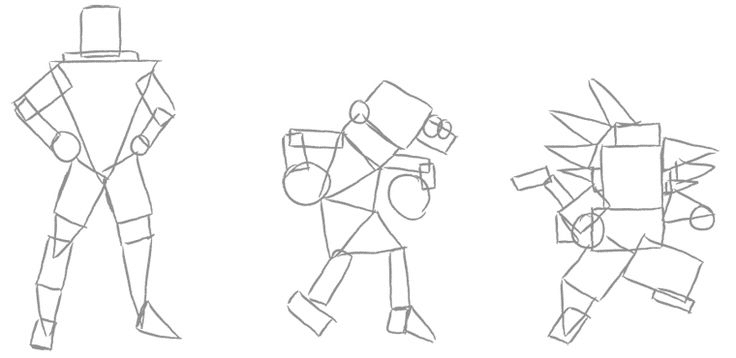
Más allá de los límites: El formato como herramienta de innovación
A medida que profundizamos en el mundo de los formatos y encuadres, nos damos cuenta de que estos elementos son mucho más que simples contenedores para nuestro arte. Son herramientas poderosas que pueden transformar radicalmente nuestra forma de crear y percibir el arte.
Piensa en cómo los artistas a lo largo de la historia han utilizado el formato para desafiar las convenciones y crear obras revolucionarias. Los murales de Diego Rivera no solo llenaron paredes, sino que redefinieron cómo interactuamos con el arte en espacios públicos. Los cómics experimentales de Chris Ware juegan con el formato de maneras que desafían nuestra percepción de la narrativa visual.
En la era digital, el concepto de formato está evolucionando aún más. Los artistas digitales están creando obras que se adaptan a diferentes dispositivos y pantallas, explorando nuevas formas de interactividad y dinamismo. ¿Ansioso por explorar las fronteras del arte digital? Descubre más aquí.
El formato como narrador silencioso
Cada formato cuenta una historia por sí mismo. Un lienzo panorámico puede evocar la vastedad de un paisaje antes incluso de que apliquemos el primer trazo. Un formato vertical estrecho puede sugerir elevación o profundidad. Al elegir conscientemente nuestro formato, estamos añadiendo una capa adicional de narrativa a nuestra obra.
Considera cómo diferentes culturas han abordado el formato a lo largode la historia. Los rollos de pergamino chinos, por ejemplo, invitan a una experiencia de visualización completamente diferente a la de un cuadro enmarcado occidental. Los mandalas tibetanos, con su formato circular, reflejan una visión cósmica del universo. Cada elección de formato no solo influye en cómo creamos, sino también en cómo el espectador interactúa con nuestra obra.
Rompiendo las barreras entre el arte y el espacio
Los artistas contemporáneos están llevando el concepto de formato aún más allá, difuminando las líneas entre la obra de arte y el espacio que la rodea. Instalaciones que ocupan salas enteras, esculturas que se integran con el paisaje urbano, y proyecciones que transforman edificios completos son ejemplos de cómo el formato puede expandirse más allá de los límites tradicionales.
Esta expansión del concepto de formato nos invita a repensar no solo cómo creamos arte, sino también cómo lo experimentamos. ¿Listo para expandir tus horizontes artísticos? Explora nuevas posibilidades aquí.
Conclusión: El formato como catalizador de la creatividad
A lo largo de este viaje por el mundo de los formatos y encuadres, hemos descubierto que estos elementos son mucho más que simples aspectos técnicos del dibujo. Son herramientas poderosas que pueden desbloquear nuevas dimensiones de creatividad y expresión artística.
Hemos aprendido que el formato puede ser:
- Un colaborador silencioso en nuestro proceso creativo
- Un desafío que nos empuja fuera de nuestra zona de confort
- Una herramienta para guiar la narrativa visual
- Un medio para interactuar con el espacio y el espectador de maneras innovadoras
Al experimentar con diferentes formatos, desde los más convencionales hasta los más audaces y experimentales, no solo mejoramos nuestras habilidades técnicas, sino que también ampliamos nuestra visión artística. Cada nuevo formato que exploramos abre la puerta a posibilidades creativas inexploradas.
Te animo a que sigas experimentando con los formatos en tu práctica artística. No temas romper las convenciones y crear tus propias reglas. Recuerda, el verdadero poder del arte radica en su capacidad para sorprender, emocionar y desafiar nuestras percepciones.
El formato es tu aliado, tu lienzo en blanco, tu campo de juego creativo. Úsalo sabiamente, desafíalo constantemente, y verás cómo tu arte se transforma y evoluciona de maneras que nunca imaginaste. El único límite es tu imaginación. ¡Así que adelante, dibuja fuera de los márgenes y crea algo extraordinario!

